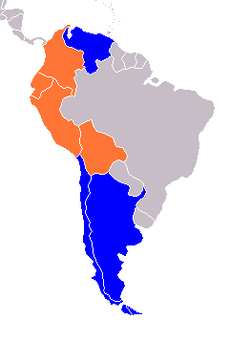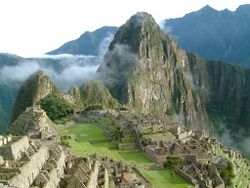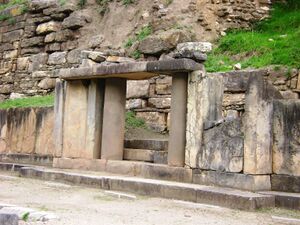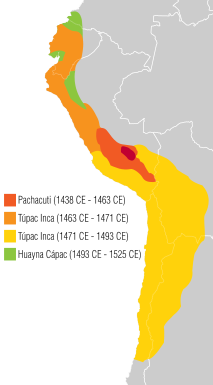دول الأنديز
دول الأنديز (إسپانية: Estados Andinos) are a group of countries in western South America connected by the Andes mountain range. The "Andean States" is sometimes used to refer to all seven countries that the Andes runs through, regions with a shared culture primarily spread during the times of the Inca Empire (such as the Quechua language and Andean cuisine), or it can be used in a geopolitical sense to designate countries in the region that are members of the Andean Community trade group and have a local (as opposed to the Southern Cone) cultural orientation.
The Andes extend through the western part of South America in the following seven countries[1] (arranged from north to south):
 ڤنزويلا (a part of Caribbean South America, not considered an Andean state in geopolitics)
ڤنزويلا (a part of Caribbean South America, not considered an Andean state in geopolitics) كولومبيا (also a part of Caribbean South America)
كولومبيا (also a part of Caribbean South America) الإكوادور
الإكوادور پيرو
پيرو بوليڤيا
بوليڤيا تشيلي (a part of the Southern Cone, often not considered an Andean state in geopolitics)
تشيلي (a part of the Southern Cone, often not considered an Andean state in geopolitics) الأرجنتين (a part of the Southern Cone, generally not considered an Andean state in geopolitics)
الأرجنتين (a part of the Southern Cone, generally not considered an Andean state in geopolitics)
When grouped as the "Andean states", the emphasis is on the mountainous regions of these countries.
Bolivia, Colombia, Ecuador, and Peru are parts of the Andean Community (a trade group), and each contains the Amazon rainforest and Amazonian indigenous people, as well as the Andean Mountains.
أصل الاسم
The word Andes comes from the expression anti of the Quechua language that means east , the cardinal point where the Sun rises. 2 3 4
The way it became the name of the mountain range is explained in Royal Commentaries of the Incas written by Inca Garcilaso de la Vega : 5
The Inca kings divided their empire into four parts that they called Tihuantin-Suyu, which means "The four parts of the world" according to the four main parts of the sky: east, west, north and south. They named the eastern part Antisuyu , after a province called Anti that is to the east, for which they also call the entire Sierra Nevada mountain range that passes to the east of Peru Anti . Inca Garcilaso de la Vega The change from Quechua Anti to Spanish Andes is explained because in Quechua the sound expressed by the consonant d is not used .
There is another etymology according to which anti could come from anta which means copper . 6 7 The German philologist Johann Karl Eduard Buschmann proved that this could not be true because Quechua maintains the final a in compound words, as in Antamarca (copper province). 8 9
التاريخ
العصر الحجري
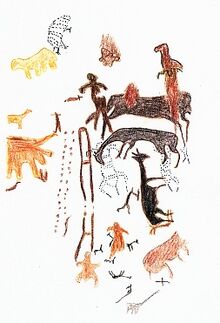
فترة التشكل
إمبراطورية الإنكا: Tahuantinsuyo (1438-1532)

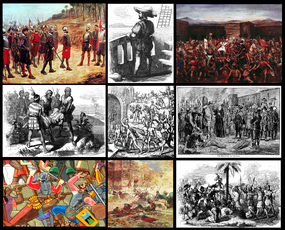
انظر أيضاً
- Alpine states
- Amazon rainforest
- Andean Community
- Baltic states
- Brazilian Highlands
- Caribbean South America
- Himalayan states
- Southern Cone
- The Guianas
References
| مناطق العالم | |||||||||||||||||||||||||
|---|---|---|---|---|---|---|---|---|---|---|---|---|---|---|---|---|---|---|---|---|---|---|---|---|---|
|
| ||||||||||||||||||||||||
| انظر أيضاً قارات العالم | |||||||||||||||||||||||||
